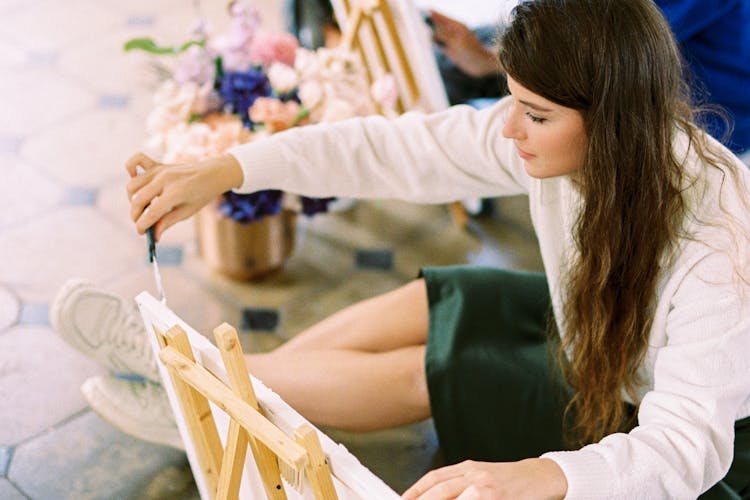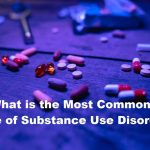In This Blog
This blog explores Art therapy as a tool for mental health support. You’ll learn:
- What art therapy is and who it helps
- Roles and responsibilities of art therapists
- Creative therapy types and activities
- Real-life examples of art therapy for mental health
- Evidence on its effectiveness and why it works
- How to participate even if you’re not artistically skilled.
Art therapy is a form of psychotherapy that makes use of art as a mode of treatment. Drawing and painting, sculpting, and other forms of artistic abilities can help patients to explore their emotions, resolve inner conflict, and improve their psychological condition. Unlike traditional talk therapy, ART therapy allows individuals to air their emotions that they may not be in a position to communicate. The approach can be used particularly in adults who are forced to deal with trauma, anxiety, depression, or stress-related disorders.
The art-making process not only encourages the expression of emotions but also assists in the indulgence of self-discovery, self-development, and increased appreciation of the life one is leading. Besides emotional gains, ART therapy may enhance cognitive, self-esteem, and social interactions. The treatment is directed by professional art therapists who assist the clients to make sense of their artwork, reflect on their feelings, and transfer the insights into significant behavioral outcomes. In the long term, these creative interventions may also be very helpful towards improving resilience and coping.

What is Art Therapy?
Art therapy is a mental health therapy that involves creative procedures to improve emotional, psychological, and social health. It is an amalgamation of traditional therapies and artwork to help clients play and experiment with painful emotions.
In contrast to recreational art, ART therapy is organized, purpose-oriented, and facilitated by licensed professionals who are trained in psychology and art. The treatment can be done in various ways, such as painting, drawing, sculpture, and collage. On the one hand, through these activities, individuals have access to new insights into their experiences, process trauma, and develop a deeper understanding of themselves.
100% Confidential Support is Available 24/7
No matter what you’re going through, you’re not alone. Our dedicated team is here to provide a safe, judgment-free space where you can talk openly and honestly. Whether you need emotional support, resources, or just someone to listen.
We’re here for you—completely confidential and always respectful of your privacy. Call us today!
Who are Art Therapists?
Art therapists are licensed mental health professionals who have been trained in psychology and the visual arts. They are expected to be:
- Planning and leading therapeutic art.
- Assistance to clients in exploring feelings by the use of creativity.
- The therapeutic interpretation of art.
- Combining art therapy with other clinical therapies of the mind.
- Follow up and modify the interventions to suit the needs of some.
Art therapists deal with big groups of people, ranging from children in schools to adults in hospitals, assisting them to deal with extensive mental health issues.
Deland Treatment Solutions
Battling with Drug and Alcohol Addition? Remember, you are not alone and we are here to help you!
Types of Creative Therapies
- Visual Art Therapy: Build or alleviate stress by drawing, painting, or sculpting.
- Music Therapy: Discover emotion and lift the mood through singing, instruments or listening activities.
- Dance/Movement Therapy: Work out emotions and bind the mind and body together using movement.
- Drama Therapy: Learn to work through and comprehend feelings with the help of role-plays and theatrical exercises.
- Poetry & Writing Therapy: Process and reflect on emotions by way of journaling or storytelling, or poetry.
These methods provide a distinct avenue of emotional expression, and thus, creative therapies have a variety of applications in supporting mental health.
Art Therapy Activities
Art therapy involves the use of structured tasks based on needs. Common exercises include:
- Emotion Mapping: Sketching emotions in the form of colors, shapes or patterns.
- Collage Making Creation: To demonstrate inner experiences by using images and textures.
- Sculpting Figures: Projecting emotions into 3D art.
- Guided Painting: Painting using prompts to develop personal themes.
- Mandala Creation: Round shapes to encourage concentration and attention.
100% Confidential Support is Available 24/7
No matter what you’re going through, you’re not alone. Our dedicated team is here to provide a safe, judgment-free space where you can talk openly and honestly. Whether you need emotional support, resources, or just someone to listen.
We’re here for you—completely confidential and always respectful of your privacy. Call us today!

The Creative Therapy Sessions at DeLand Treatment Solutions – Visit today and Call
Art Therapy for Mental Health
The art therapy helps patients to work with various mental health issues:
- Stress and Anxiety: Decreases tension by engaging in creative tasks.
- Depression: facilitates the release of challenging feelings and elevates mood.
- Trauma/PTSD: Provides non-verbal methods to overcome traumatic events.
- Behavioral Problems: Teaches the children and adults to cope.
- Self-Esteem: Helps increase confidence in achievement and self-expression.
Through therapeutic art, patients usually have a sense of control and dominance over their emotional world.
Art Therapy for Mental Health Activities
Some of the mental health activities include:
- Emotion Diaries: Art and journaling to record emotion.
- Guided Imagery Drawing: The reenactment of imagined situations into drawings.
- Safe Space Painting: It involves the use of scenes to assist in attaining a sense of tranquility and calmness.
- Teamwork: Promoting teamwork, interaction, and social support.
- Symbolic Representation: The way to convey abstract feelings with the help of shapes and colors.
These exercises are intended to be user-friendly, even in the case that the person has no prior experience with art.
Art Therapy for Mental Health Examples
Traumatized children also create guardian characters to demonstrate safety.
- Color and pattern are used by teens with anxiety to indicate a mood.
- Grieving adults make memory collages to deal with loss.
- Those who have PTSD carve figures to release stress and tension.
- Social skills development in groups with the help of collaborative artworks.
Expert’s advice: Art therapy makes clients reveal their emotions without verbal means, which can help make the clients recover, whereas American art therapy left an imprint on my opinion.
Where Do Art Therapists Work?
The work of art therapists is done in various institutions, which include:
- Hospitals and clinics
- Mental health centers
- Learning institutions and schools
- Private practice
- Medical communities and services
Such settings enable therapists to modify activities to suit the requirements of individuals, groups, or expert communities.
Why is Art Therapy Effective?
Art therapy is effective in the sense that it involves more than half of the brain at a given time. The creative process arouses emotional expression, brain cognition, and sensory recognition. It assists the clients in projecting their inner turmoil without being judgmental in the setting.
Research has revealed that ART therapy can minimize the symptoms of depression, anxiety, and post-traumatic stress disorder. Through the process of creating tangible artistic media, clients are provided with awareness of their feelings, their ability to solve problems, and their ability to build healthier coping mechanisms. The organized but loose quality of ART therapy renders it especially useful to those people who have difficulties in verbal communication or who have suffered trauma.
Learn about art therapy at DeLand Treatment Solutions – Call and begin your path.
Do You Have To Be Good At Art?
Absolutely not. ART therapy is not a creative ability but a manifestation. The way through which the creation occurs is of interest to therapists, and not the end product. The donors are supposed to explore and experiment with feelings and think about their works rather than worry about their technical quality.
It is directed to emotional sensitivity, self-identification, and recovery. ART therapy is not exclusive and is thus affordable to all people, irrespective of their age and capability.
FACT: A 2023 study found structured art therapy reduced anxiety symptoms by 40% within six sessions.
Key Takeaways
- ART therapy involves creative expression as a means of providing mental health and emotional development.
- The work involves drawing, painting, sculpting, writing, and group projects.
- It is useful in trauma, anxiety, depression, post-traumatic stress disorder, and self-esteem problems.
- Art therapists are professionals who are trained to lead the process safely.
- It does not need artistic ability, just concentration on self-expression and emotional understanding.
- ART therapy can be administered on a personal or a group basis in a variety of settings.
FAQs About Art Therapy
Who is art therapy best suited for?
Children, teens, and adults who are forced to overcome trauma, stress, anxiety, or depression can be treated with the help of art therapy. It proves particularly beneficial with people who feel uneasy when it comes to expressing their feelings with the help of words or with those who use a more creative non-verbal approach to therapy.
What is the success rate of art therapy?
Studies have shown that organized art therapy interventions may result in a dramatic change in emotional conditions. It has been found that with a few sessions, anxiety, depression, and PTSD symptoms were reduced in 35-45 percent of the participants, depending on the population and the intensity of the therapy.
What are the disadvantages of art therapy?
Even though it is effective, art therapy might not be used as a substitute for standard psychotherapy in cases of serious mental health conditions. It needs to have access to trained therapists and may be restricted by the availability of the sessions or insurance. The outcomes can be different, based on personal attendance and activity.
Who is most likely to use art therapy?
Art therapy is more often applied to trauma and anxiety, depression, grief, senior development issues, and developmental challenges in children, teenagers, adults, and seniors. It is also common in schools, hospitals, and programs in the communities where the non-verbal expression is of value.
How expensive is art therapy?
Prices are different according to the location, credentials of the therapist, and the length of the session.





















